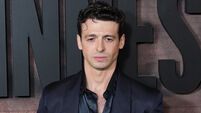Observatory at Blackrock Castle to screen space shuttle’s final lift-off
The space shuttle Atlantis and four NASA astronauts is scheduled to lift off from the Kennedy Space Centre in Florida at 4.26pm, Irish time, to begin its 12-day mission to the International Space Station (ISS).
Last night there were reports that stormy weather may delay the shuttle’s launch but weather permitting the observatory will start screening the event at 4pm and admission is free. The organisers will also be giving out NASA souvenirs to all who attend.
Leo Enright, one of only a handful of journalists in the world who has covered the space shuttle programme since it began, will be on hand to provide the commentary from the Kennedy Space Centre.
Enright was in Mission Control in Houston in 1972 when the space shuttle programme was first announced.
He was also in Cape Canaveral when the first shuttle Columbia launched in 1981 and was standing in the desert when the shuttle landed back in California.
During the 12-day mission NASA’s astronauts commander Chris Ferguson, pilot Doug Hurley and mission specialists Sandy Magnus and Rex Walheim, will deliver the Raffaello multi-purpose logistics module filled with supplies to sustain station operations once the shuttles are retired.
The mission will also engage with the Robotic Refuelling Mission, an experiment designed to demonstrate and test the tools, technologies and techniques needed to robotically refuel satellites in space.
For further information contact CIT Blackrock Castle Observatory at (021) 4357917 or visit www.bco.ie.
Meanwhile, Limerick Institute of Technology (LIT) postgraduate student, Gerard Newsham will create a piece of history today when his science project will be carried into space on the final shuttle mission.
Staff and students at LIT will be glued to live TV feeds from the Kennedy Space Centre.
Gerard’s project studies how plants and bacteria work together in space.
Originally from Corbally, Gerard began his studies at LIT in 2004.
In 2008, he was selected for an internship at NASA’s Kennedy Space Centre. Gerard is still working there as a member of their space flight research group.
“I still pinch myself every day I’m here... To be associated with the final mission is an honour that I am humbled by,” he said.





